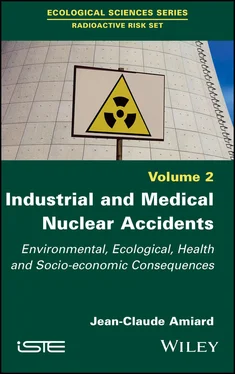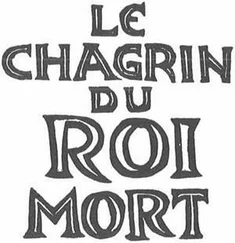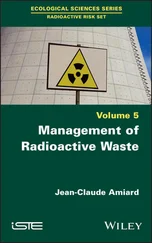The possibilities for terrorists to cause a more or less major nuclear accident are numerous. National and international authorities must be vigilant and develop strategies to combat this risk of terrorism.
1.5. What are the main nuclear accidents?
The question is relatively simple but the answer is complex and subject to variation depending on sources [SOV 08, ROG 11, LEL 12, HAD 14, ASN 16]. Some of the discrepancies result from the criteria used to measure the severity of an accident. Is it the number of immediate deaths? Is it the amount of radioactivity released into the environment? Is it the area of land that has been condemned for centuries?
In the absence of a comprehensive and public reference list of nuclear accidents, we have reconstructed the history of nuclear accidents in power plants from scientific literature and various public sources.
The list of significant events classified at various levels on the INES is similar depending on the source for severity levels 6 and 7. On the contrary, for the lower levels, the lists diverge greatly. For information purposes, we provide in Table 1.4 those from the ASN [ASN 16]. The ASN thus retained two level 7 accidents, one level 6 accident, one level 5 accident, six level 4 accidents and 16 level 3 incidents.
Table 1.4. List of nuclear accidents in the civil field classified in order of decreasing severity according to the INES classification (severity 7 to 3). Significant events classified by the ASN [ASN 16] and by the IRSN [IRS 17e]
| Year |
Site |
Country |
Case |
| Level 7 |
| 1986 |
Chernobyl |
Ukraine |
Explosion of reactor 4 at the nuclear power plant |
| 2011 |
Fukushima |
Japan |
Explosion of reactors 1, 2 and 3 at the nuclear power plant |
| Level 6 |
| 1957 |
Kyshtym |
USSR |
Explosion of a radioactive product tank at the reprocessing plant |
| Level 5 |
| 1979 |
Three Mile Island |
USA |
Partial fusion of the reactor core |
| Level 4 |
|
| 1973 |
Windscale |
UK |
Release of radioactive materials following an exothermic reaction in a tank during reprocessing |
| 1980 |
Saint-Laurent-des-Eaux |
France |
Damage to the A2 reactor’s core |
| 1999 |
Tokai-Mura |
Japan |
Criticality accident in a fuel manufacturing facility |
| 2006 |
Fleurus |
Belgium |
Irradiation by a cobalt 60 source of a worker working in an ionizing radiation sterilization facility |
| 2010 |
New Delhi |
India |
Discovery of radioactive materials in scrap metal stores and irradiation of a scrap metal dealer |
| 2011 |
Use of radiography |
Bulgaria |
Irradiation by a cobalt 60 source of four workers involved in an ionizing radiation sterilization facility |
| Level 3 |
| 1981 |
The Hague |
France |
Fire in a storage silo |
| 1991 |
Smolensk |
Russia |
Exceeding the operating boundary conditions during restart tests following a maintenance shutdown of reactor 2 at the nuclear power plant |
| 1992 |
Sellafield |
UK |
Nitrated plutonium leak in a containment cell at the Sellafield fuel reprocessing facility |
| 1993 |
Narora |
India |
Loss of power supply to reactor 1 at the nuclear power plant |
| 1993 |
Kola |
Russia |
Emergency shutdown of reactor 1 at the nuclear power plant |
| 2002 |
Roissy |
France |
Incident during the transport of a package by Federal Express between Sweden and the United States via Roissy airport |
| 2002 |
Davis–Besse |
USA |
Discovery of a cavity in the vessel cover on the power plant reactor due to boric acid corrosion of the metal |
| 2002 |
New Orleans |
United States |
High dose rate measured on a package from Sweden containing iridium 192 sources |
| 2003 |
Paks |
Hungary |
Release of radioactive gases from cracked fuel rods stored in a cleaning tank located next to the fuel pool at the plant |
| 2004 |
Puerto Rico |
Puerto Rico |
Irradiation by a cobalt 60 source of two workers involved in an ionizing radiation sterilization facility |
| 2005 |
Sellafield |
UK |
Detection of a radioactive leak on a pipe in the THORP fuel reprocessing facility |
| 2008 |
Toulouse |
France |
Irradiation by a cobalt 60 source of a worker working in an irradiation bunker on the ONERA site |
| 2008 |
Fleurus |
Belgium |
Abnormal release of iodine 131 from the chimney of the Institut des radioélements building during a transfer of liquid effluent between tanks |
| 2008 |
São Paulo |
Brazil |
Irradiation of an American and a Brazilian worker during the replacement of the cobalt 60 source of a cobalt therapy device in a state hospital |
Level 7 is used by all for the Chernobyl accident [IAE 13] and Fukushima [IRS 17e], level 6 for Kyshtym and level 5 for Three Mile Island [IAE 13]. On the contrary, the ASN [ASN 16] classifies the 1957 Windscale accident as level 4 and the IAEA [IAE 13] as level 5. In its list, the ASN ignores the Goiânia accident in Brazil in 1987 [IAE 13] and the accident at the Chalk River nuclear laboratories in Canada in 1952 [MOR 15], classified at level 5.
The ASN ignores the accident of October 17, 1969 in Saint Laurent with the fusion of 50 kg of uranium from the Saint-Laurent-A1 nuclear power plant in France during loading [IRS 15a]. Similarly, the ASN ignores the core fusion at the Lucens nuclear power plant in Switzerland on January 21, 1969 [CAN 11], classified at level 5 by the OFPP ( Office fédéral de la protection de la population ) [OFP 15]. The ASN [ASN 16] classifies the Fleurus accident ( Institut national des radioélements ) in Belgium in 2006 as level 3 and the IAEA [IAE 13] as level 4.
The level 3 incidents reported by the various official sources widely differ. While the ASN retains the Sellafield accident in 2005 [IAE 13] and the silo fire in The Hague in 1981 [FRA 14], several incidents reported by the IAEA [IAE 13], such as the loss of a source causing severe burns in 1999 in Yanango (Peru) or the same year in Ikitelli (Turkey) [IAE 13], are ignored. Further examples are the exposure of a worker to a radioactive source at ONERA in Toulouse (March 18, 2008) and of three temporary employees who entered an industrial accelerator in operation and were heavily irradiated in Forbach (Moselle) in 1991 [IRS 17e]. This was also the case for a radioactive leak ( 192Ir) from a drum shipped from Sweden to the United States, transiting through Roissy (December 2001–January 2002) [ANO 02].
The most serious nuclear accidents involving reactors are those involving the melting of the fuel contained in their core. From an analysis of the various lists of nuclear accidents [SOV 08, ROG 11], we can consider that at least 12 reactors have been destroyed by this phenomenon since 1952. These are the Windscale plutonium cell (United Kingdom) in 1957 (but which we classified as a military accident), the Chalk River CANDU reactor (Canada) in 1958, the Simi Valley sodium-cooled experimental reactor (California) in 1959, the Monroe sodium-cooled demonstration breeder reactor (Michigan) in 1966, the Chapelcross reactor (United Kingdom) in 1967, the Lucens experimental reactor (Switzerland) in 1969, the pressurized water reactor at Three Mile Island (Pennsylvania) in 1979, the graphite-gas A2 reactor at Saint-Laurent-des-Eaux (France) in 1980, the Chernobyl reactor (Soviet Union) in 1986 and the three reactors at Fukushima (Japan) in 2011.
Читать дальше












